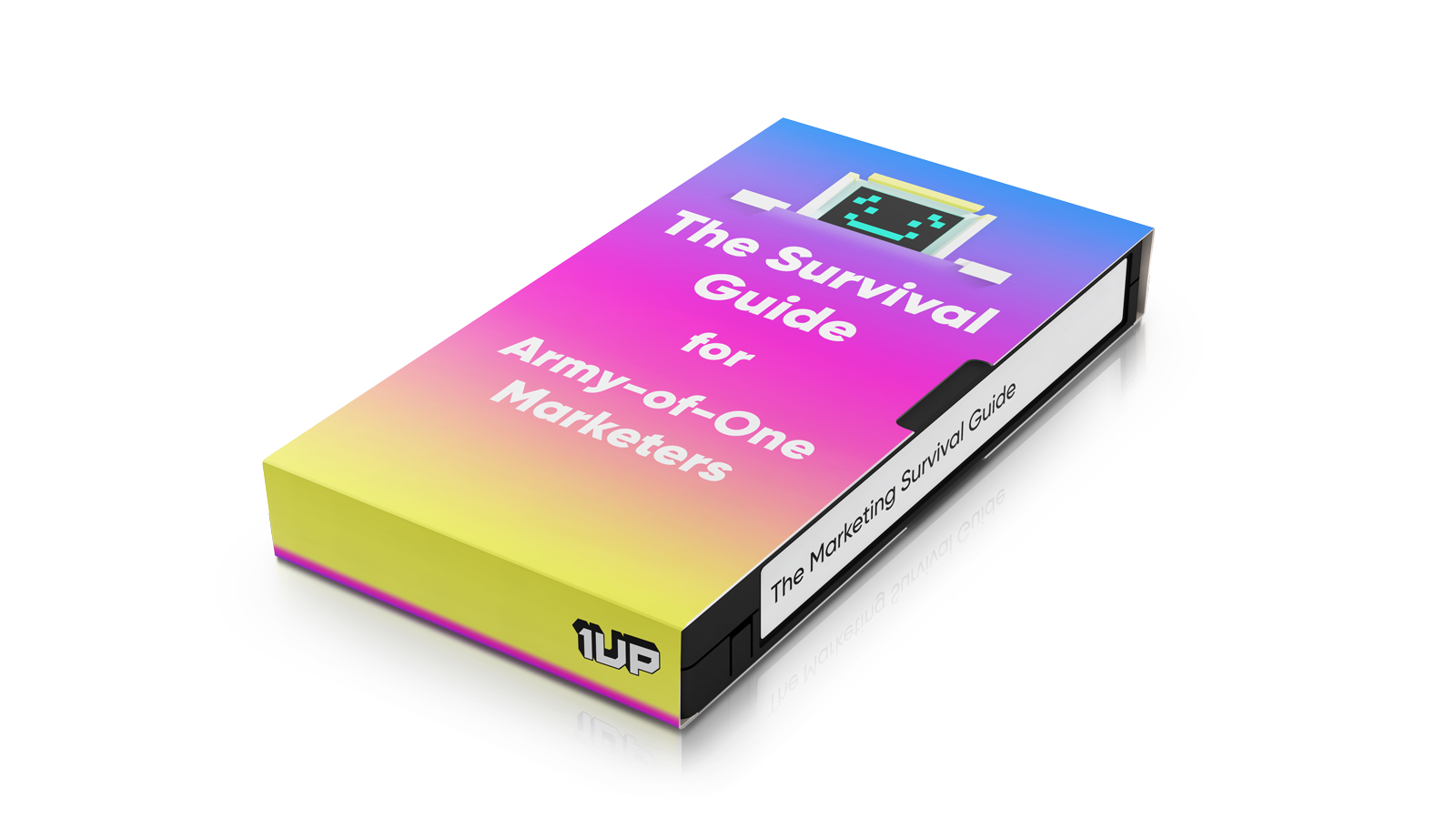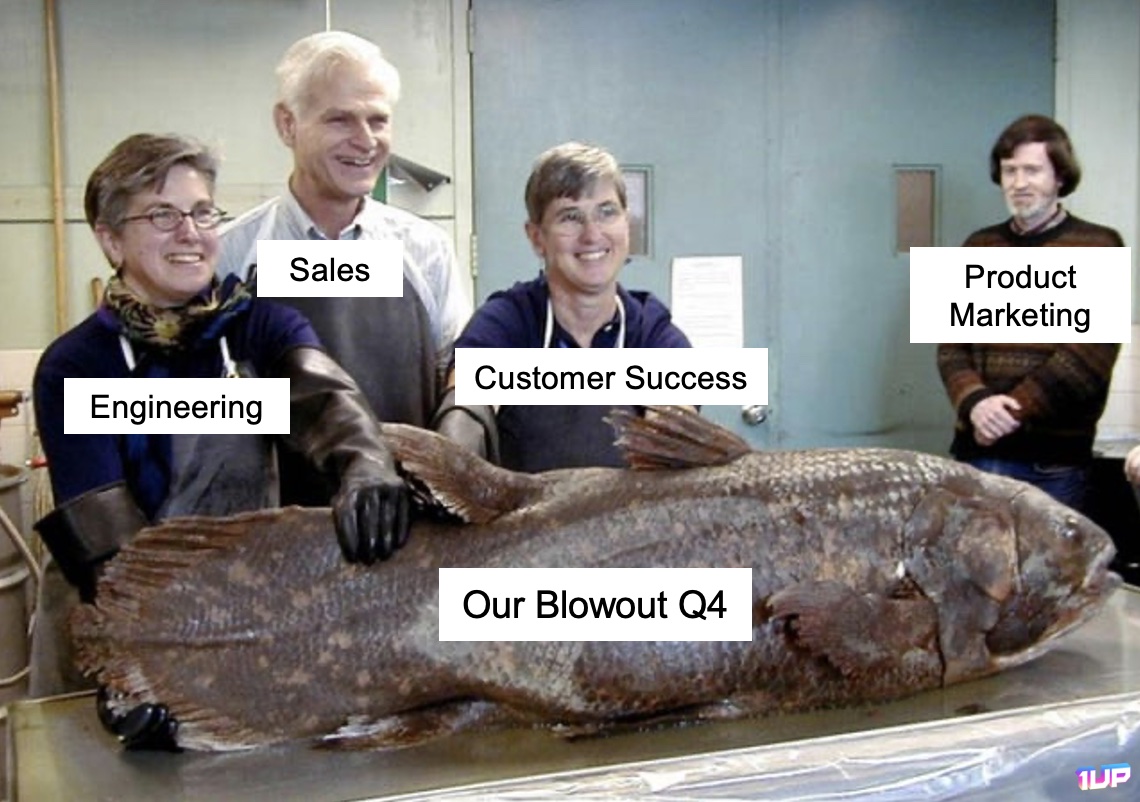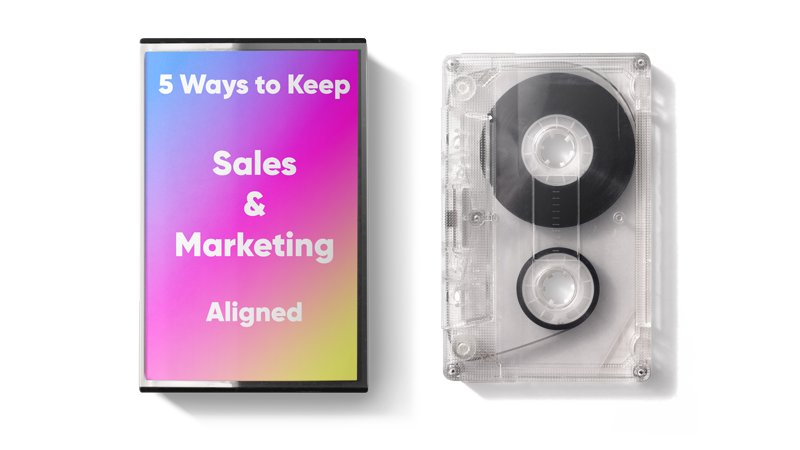What comes to mind when you think of B2B marketing?
Registration forms. White papers. eBooks.
Videos that require a registration form. Hour-long webinars recorded in a monotone voice.
Two-tone websites that all look exactly the same. Registration forms that lead to… more registration forms?
How about those blog posts that always seem to end with “The solution to all of the problems in this post is… our product.”
Or those PDFs that look like great walls of text:
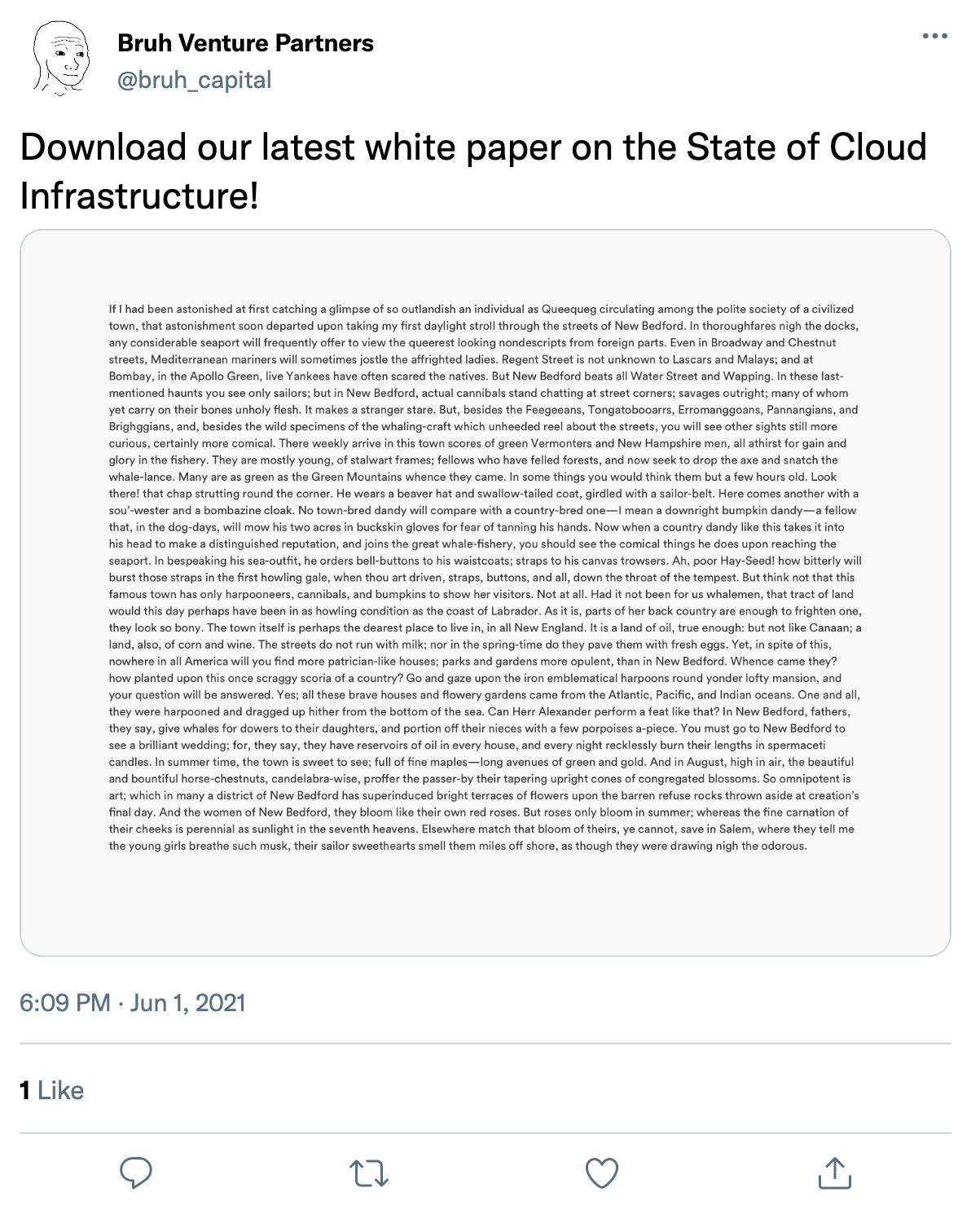
Most B2B Marketing is boring and repetitive. And if you’re on a Sales & Marketing team you probably know this unspoken truth: It’s not about being different. It’s about looking the same as everyone else.
Traditional B2B Marketing efforts often result in a series of companies trying to emulate and remix one another. Big companies want to look like innovative startups. Startups want to look like big companies – a.k.a. the “safe bet.”
You want your product to feel like a safe bet. So why bother taking risks with messaging or branding?
It’s like the old saying, “Nobody gets fired for buying IBM.”
The problem with this approach is that it flies in the face of what people look for when connecting with a brand or product.
Customers seek out differentiation. They want to know why your product is unique. Some of them even put in the time to create a detailed competitive analysis before they buy.
B2B Marketing can be better than that. Not just for the consumers, but the creators making this stuff. Here are some ways you can level up and stand out.
Key Takeaways
- An emphasis on products and people goes a long way in B2B marketing. Brands should invest more time in demos, persona-driven stories, and product visuals.
- Meme marketing is not going away anytime soon, and is easier to adopt than you might think.
- Gated content is on its way out. There’s little to gain from hiding behind registration forms these days.
Don’t Use Social Media as a Content Dumpster

Have you ever logged onto social media thinking, “What I really want right now is a 20,000 word paper on Cloud Infrastructure”?
No one goes to Twitter to download an e-Book. They’re trying to get away from work, not do more of it.
Stop posting gated content on social media with the hopes of generating email leads. You will be disappointed.
That’s not to say you shouldn’t write long-form content such as guides and eBooks, but you should consider that social media is not always the best channel for it.
And if you decide to post your long-form content to social media…
Don’t do this. 7 form fields? Why do I need to fill out seven fields just to download a PDF? Linking to a gated form can leave users feeling unsatisfied and marketing pipelines unfulfilled.
Do this instead. Notice how the post links to a big excerpt of ungated content from the report. The email is pretty much optional, but if you like what you see then you can download the full PDF. The best part? They’re only asking for your email. That’s an extremely low bar that opens the content up to many more conversions.
Visuals. More Visuals.
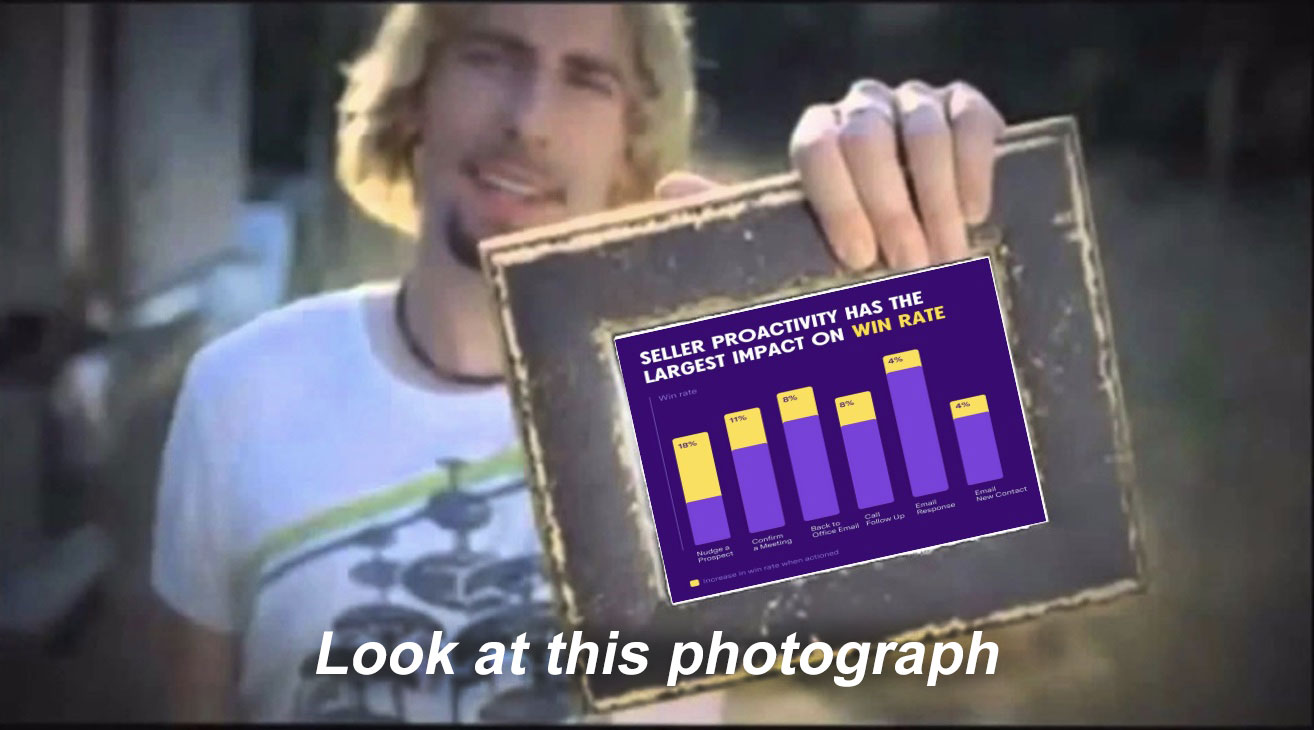
People like pictures. No one wants to stare at a wall of text that they need to zoom in to read on their phone.
In the early 2000s, it was normal to share product specs in the form of long-winded documents. Today, the average person is subjected to so much information that it is unrealistic to think they can meaningfully absorb this kind of content.
A better approach is to take snippets from your long-form content and push them on social media channels as visuals.
Gong does a great job of posting insights on social media in the form of digestible images. This gives the user a quick insight into the research; something they can actually share with their team. At the same time, it promotes the company’s product by showing the user what else they can learn if they sign up.
Double Down on Product Marketing
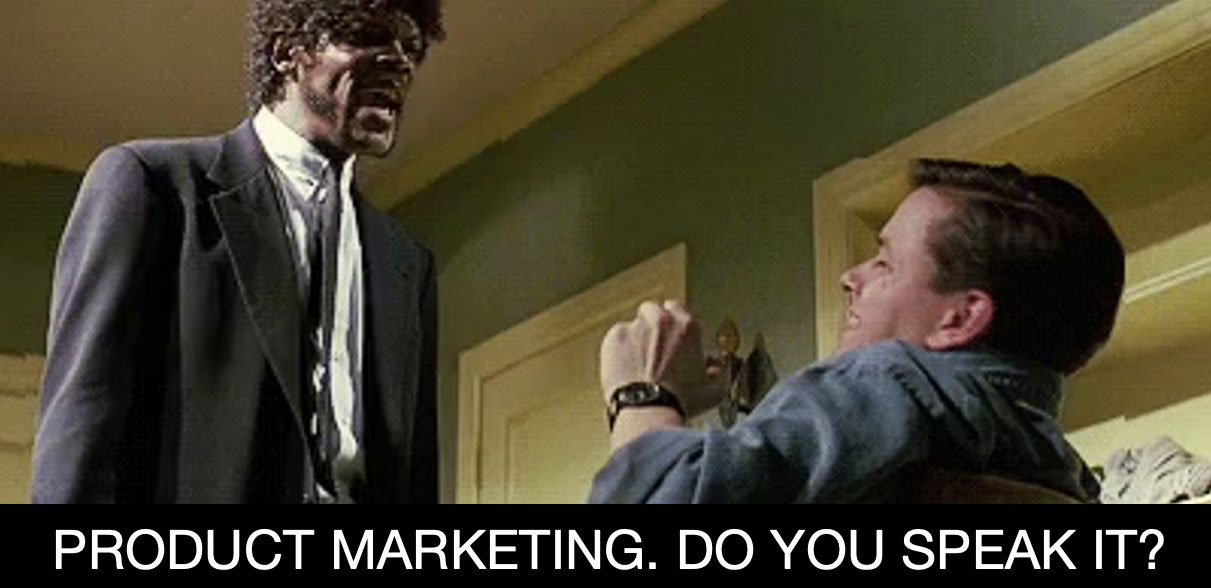
Double down on product marketing. It’s one of the hardest parts of a marketing program and one of the most rewarding.
Demos, screenshots, guides, videos, testimonials.
Posting these regularly will help you stand out with content your competitors cannot easily replicate.
B2B teams sometimes worry about showing “too much” of the product because it risks losing some competitive advantage. So they force the user to jump through hoops just to see what the product looks like. This puts these teams at a huge disadvantage against competitors who create eye-catching demos exposing their product to hundreds of potential customers.
Remember to show, not tell. The benefits of the product are not often as obvious to the customer as vendors might hope. It’s more important to show rather than just say how a product can address the customer’s pain points.
Lani Leuthvilay, Head of Product Marketing – PlainID
There is no need to gate product demos. Competitors will get their hands on your demo eventually. If you ungate your demo you can at least control the narrative around your product rather than allowing competitors to spin their own.
You don’t need to explain the inner workings of your product; just show people what the user experience can be. What are the most relatable use cases? What problems does a particular feature solve?
BigID shows very short snippets of product demos. These do a great job of showing a lot in a really short timespan. If you’re a user within their problem space, you’re likely going to want to see more.
And that’s the point of Product Marketing.
Give your users something tangible that builds confidence in your offering. B2B Marketing is a battle for the very short attention span of business customers…if you’re not filling it by showing them a great product, your competitors win.
People, People, People

There’s a reason photos of people can perform 650% better on Linkedin. Humans resonate with other humans.
Many brands make the mistake of posting tons of product-related content without any mention of the people behind it.
Your audience wants to know who is involved with your company. This applies to all stages of your growth.
Show them the people who use your product. If no one uses the product, show them who built the product.
If there’s no product, show them your employees drawing it out on a whiteboard. ANY post of people will work well on social media.
Good examples include Asana showcasing new users to the platform, or DataDog’s employee spotlight posts. These perform exceptionally well because people within a person’s network will often engage with the post. This drives more eyes to your content, builds followers and increases awareness – translation: more leads.
Fire the Registration Form
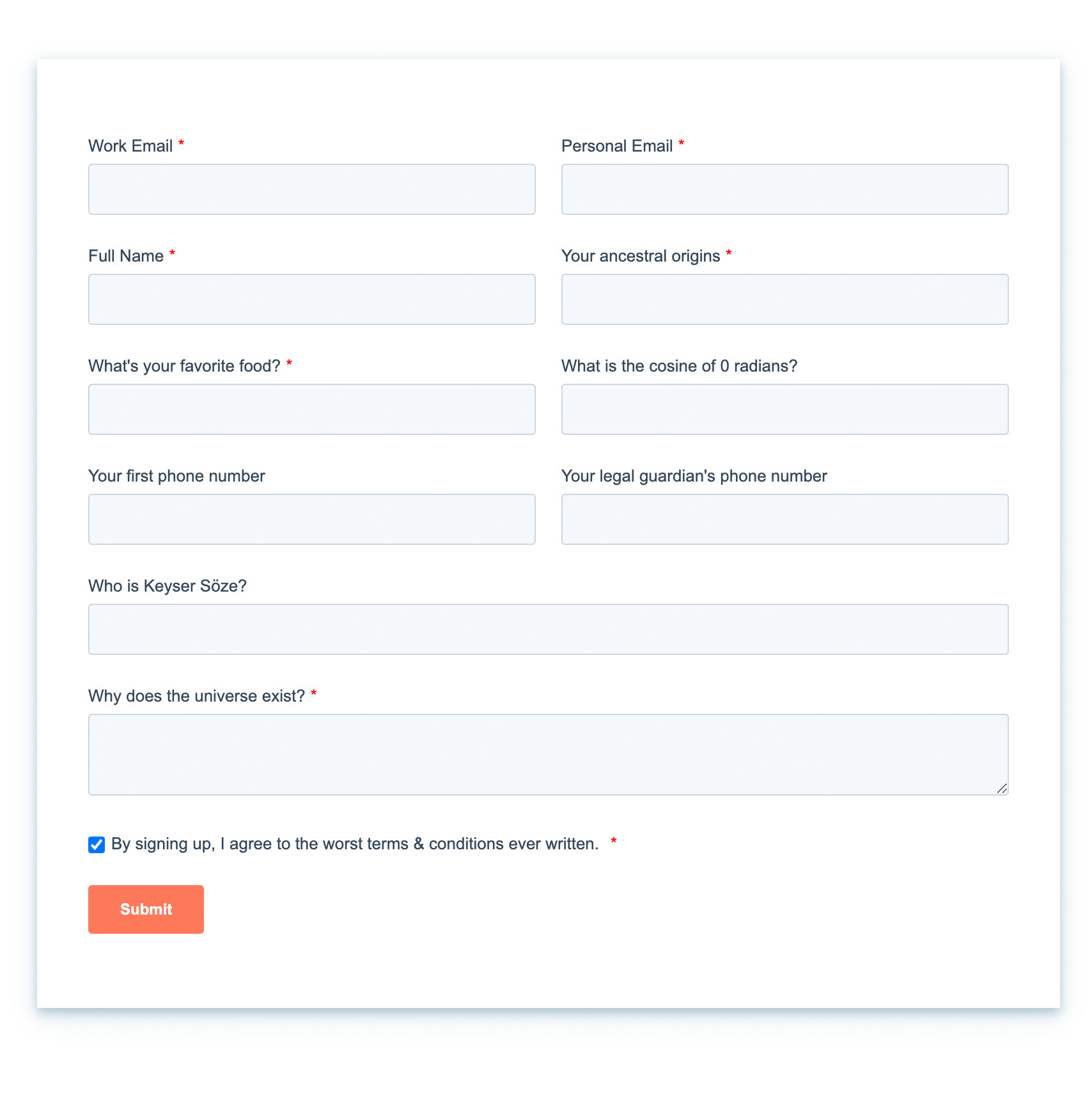
You’ve created an excellent piece of content. You think it will drive interest in your product. You want as many people to see it as possible.
So what’s the next thing you do with it? You hide it behind a registration form. Great!
Now you watch the occasional signups roll in. Maybe you even pat yourself on the back for that 1% conversion rate.
Except…that really means 100x more people could have read it.
Think about it.
Say your landing page had 1,500 visits and you got 15 new “leads” (1% conversion rate) via form signups. That means 1,485 people were potentially interested in your work but only 15 ever got to see it. You landed 15 new contacts, but what you really lost was 2,970 eyeballs seeing the content you worked so hard on.

It’s a hot topic of debate among marketers. We’re not going to argue that registration forms serve no purpose, or that everything you make should be ungated. But one thing is for sure – users hate these forms. If you’re operating under the premise of driving user delight, then get rid of them.
At the very least, make them optional or reduce the number of fields you require. There’s no need to ask someone for their home address and pet’s name just to access your recorded webinar.
Post More Memes
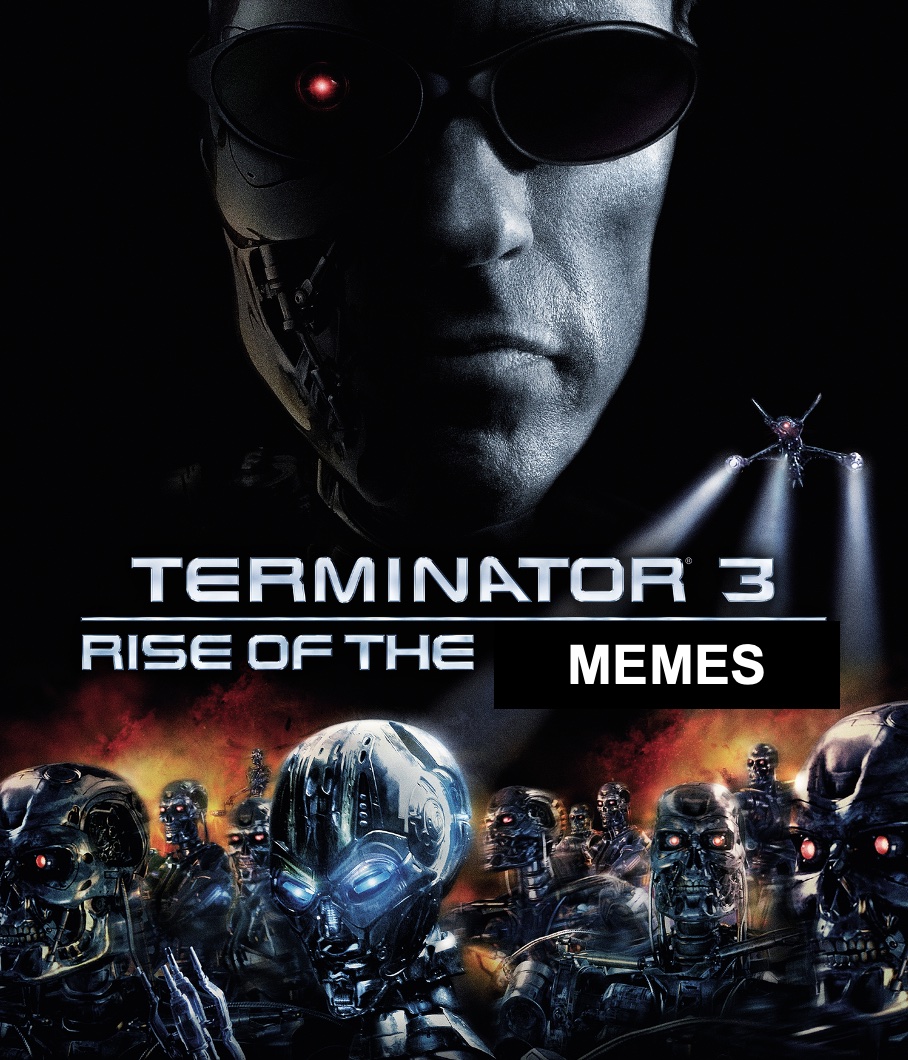
B2B marketers finding out people like memes is like the first humans discovering fire.
Never before has there been a faster, more viral way to share a message with your target audience.
The use of B2B memes is blowing up on LinkedIn and Twitter. Even Instagram, which is a notoriously weak channel for B2B marketing is seeing new life as brands move beyond coupon codes and dive deeper into memeology.
Look to companies like Balbix as an example of effective B2B meme campaigns. Or to pages like Sales Feed and Crushing_Quota, which are dedicated to cranking out sales memes to a niche audience.
What we’re seeing is an attempt by businesses to connect with their audience on a level previously ignored in the B2B Marketing sphere – humor.
Not everyone is getting it right, though. A lot of B2B memes fall flat or fail to find an audience.
Here’s the trick – never make the meme about your product. That’s a rookie mistake. Always keep memes relevant to your user persona, but never try to sell your product directly with them. This will increase its virality, as people will share it without feeling like they’re promoting a product.
Our Product Cannot Help You with Any of the Problems Described in this Blog Post
Which is why we’re not going to tell you to try 1up.ai to track everything your competitors are doing.
Good luck with your new and improved B2B Marketing program!

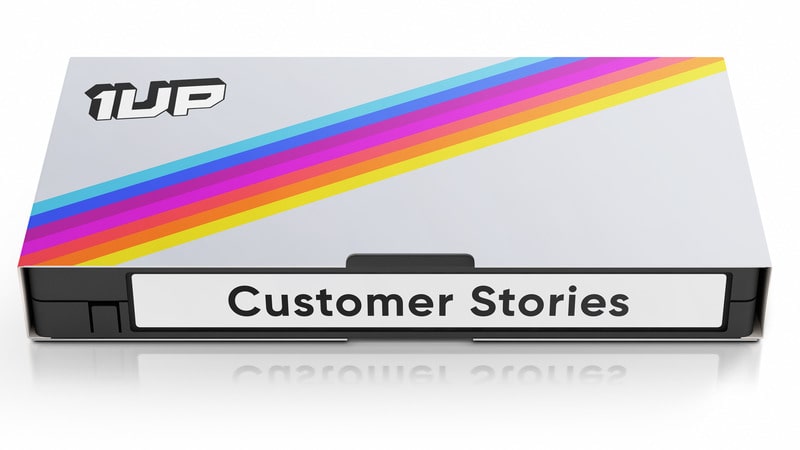

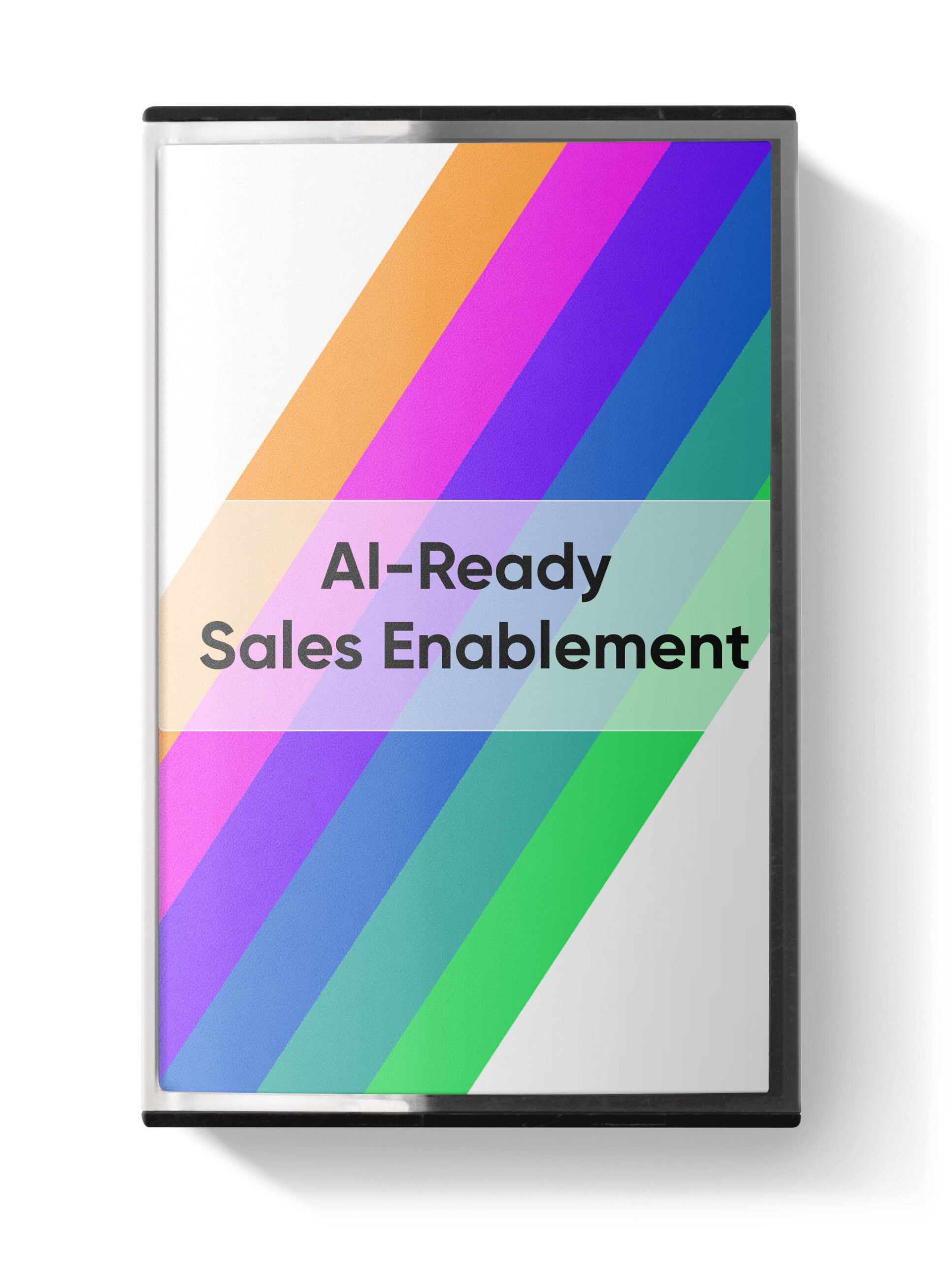
 Instagram
Instagram 




